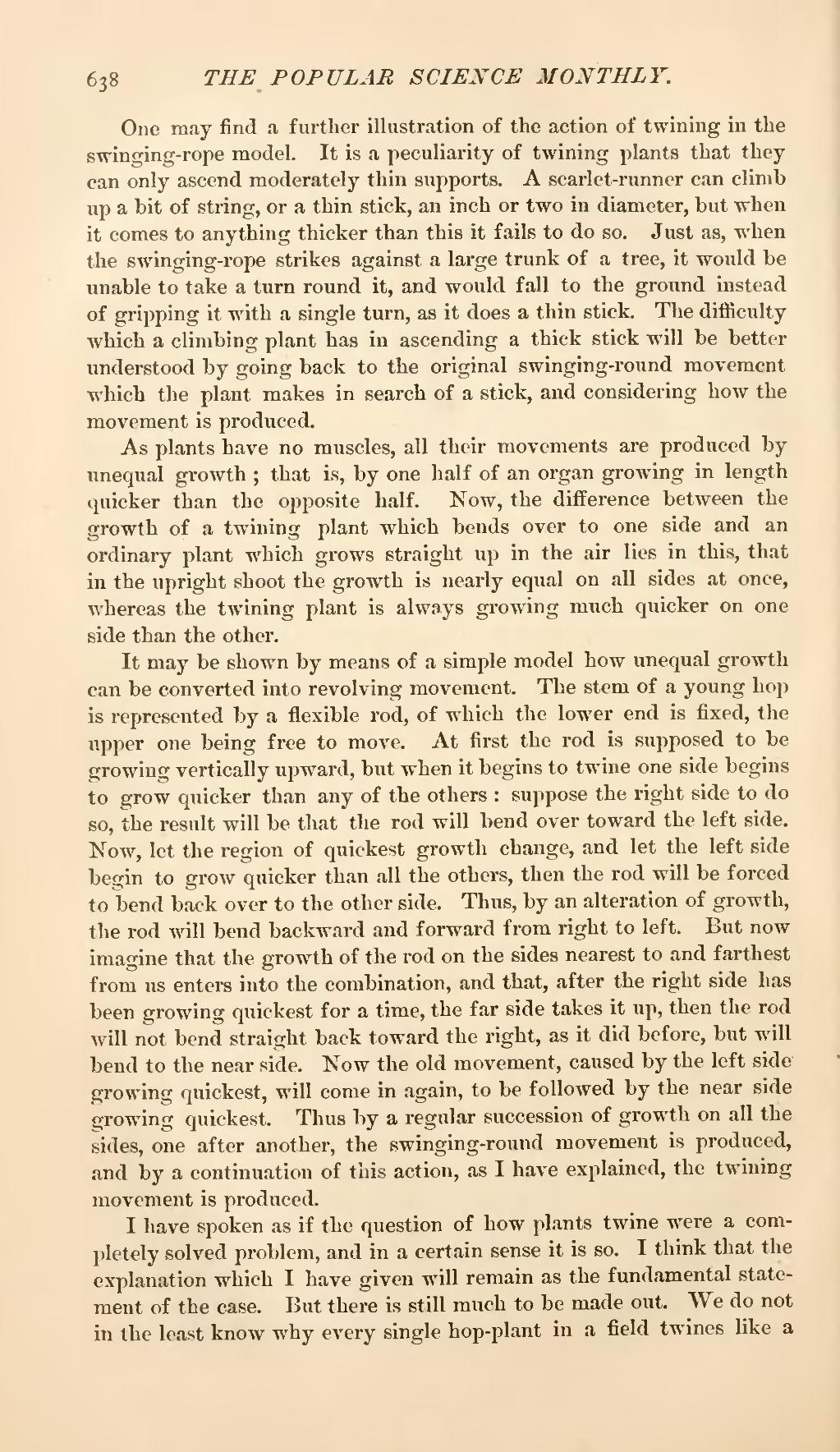One may find a further illustration of the action of twining in the swinging-rope model. It is a peculiarity of twining plants that they can only ascend moderately thin supports. A scarlet-runner can climb up a bit of string, or a thin stick, an inch or two in diameter, but when it comes to anything thicker than this it fails to do so. Just as, when the swinging-rope strikes against a large trunk of a tree, it would be unable to take a turn round it, and would fall to the ground instead of gripping it with a single turn, as it does a thin stick. The difficulty which a climbing plant has in ascending a thick stick will be better understood by going back to the original swinging-round movement which the plant makes in search of a stick, and considering how the movement is produced.
As plants have no muscles, all their movements are produced by unequal growth; that is, by one half of an organ growing in length quicker than the opposite half. Now, the difference between the growth of a twining plant which bends over to one side and an ordinary plant which grows straight up in the air lies in this, that in the upright shoot the growth is nearly equal on all sides at once, whereas the twining plant is always growing much quicker on one side than the other.
It may be shown by means of a simple model how unequal growth can be converted into revolving movement. The stem of a young hop is represented by a flexible rod, of which the lower end is fixed, the upper one being free to move. At first the rod is supposed to be growing vertically upward, but when it begins to twine one side begins to grow quicker than any of the others: suppose the right side to do so, the result will be that the rod will bend over toward the left side. Now, let the region of quickest growth change, and let the left side begin to grow quicker than all the others, then the rod will be forced to bend back over to the other side. Thus, by an alteration of growth, the rod will bend backward and forward from right to left. But now imagine that the growth of the rod on the sides nearest to and farthest from us enters into the combination, and that, after the right side has been growing quickest for a time, the far side takes it up, then the rod will not bend straight back toward the right, as it did before, but will bend to the near side. Now the old movement, caused by the left side growing quickest, will come in again, to be followed by the near side growing quickest. Thus by a regular succession of growth on all the sides, one after another, the swinging-round movement is produced, and by a continuation of this action, as I have explained, the twining movement is produced.
I have spoken as if the question of how plants twine were a completely solved problem, and in a certain sense it is so. I think that the explanation which I have given will remain as the fundamental statement of the case. But there is still much to be made out. We do not in the least know why every single hop-plant in a field twines like a
